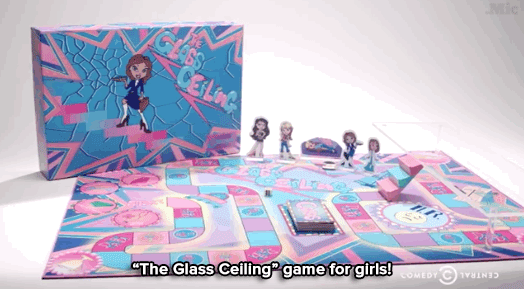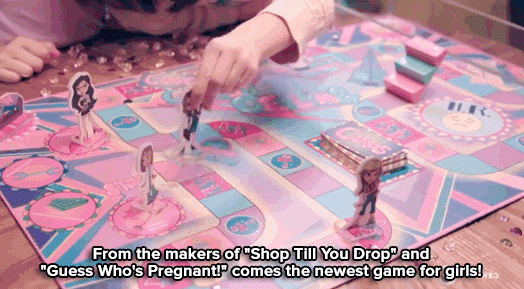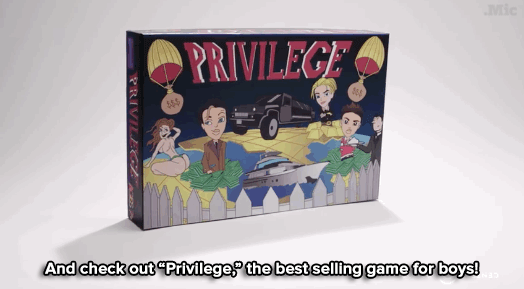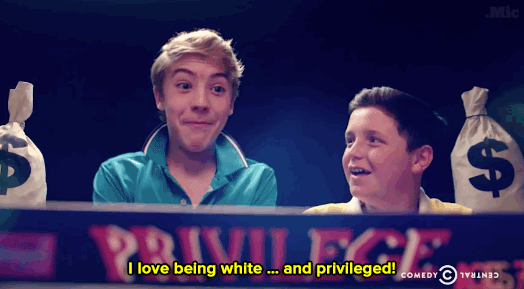Don't wanna be here? Send us removal request.
Text
Terraforming Mars - The 2nd Best Game of 2016
Every day for the next 10 days I'll be writing up a short review of my top games of 2016. Today we tackle my number 2 game of the year.
Terraforming Mars
(adsbygoogle = window.adsbygoogle || []).push({});
Terraforming Mars allows you to live out Elon Musk's wettest of dreams, putting you in the driver's seat of one of a group of private companies working to, well, terraform Mars. You'll engage in cutthroat tactics, nuke the planet, plant trees, and build cities to steak your claim and become the heroes who made Mars inhabitable.
Each player will take the helm of a unique corporation with different powers and starting resources. Players all terraform the planet together while trying to raise their Terraform Score, representing their contribution to the task. Highest score wins. You can raise your Terraform Rating a number of ways, such as raising the global temperature, raising the oxygen levels, or creating oceans in the great craters on Mars. Your Terraform Rating is also how much funding the governments on Earth will grant you at the beginning of each round. You will use this funding to buy cards at the beginning of a round, and play those cards through the course of the round. Each turn you can take two actions, which include playing cards from your hand. These cards can be used to gather resources, gain access to special actions, build cities or special tiles, or a number of other things. The cards are what really make this game shine. Each of the over two hundred cards in the game are unique, and because of that each game will be very different. Some cards are nasty, adding just the right amount of take-that for me, but if that isn't your thing those cards can be left out of the game without affecting gameplay much at all. The iconography on the cards may be imposing, but unlike games like Race for the Galaxy, they also all include clear written descriptions of what the iconography means on every card.
Other actions include buying city and forest tiles, and buying one of the various options for end game scoring. Savvy tile placement is key to the game, as it is a way to gain resources, valuable free cards, and end game points. This adds a good amount of player interaction, as players maneuver to block opponents and set themselves up for large windfalls of points in the endgame. The endgame bonuses available for purchase add an extra level of planning and depth. There are two types of bonuses: a milestone bonus available for purchase after you reach certain milestones during the game, and endgame bonuses you can activate to add end game scoring parameters to the game. The end game bonuses add a great element of trying to guess what your opponents are working on, and waiting until just the right moment to activate the bonus and be secure that you'll be the one to take those points in the end game, rather than hand them to another player.
Also included in the box is a fantastic solo game, where you race against a timer to fully terraform the planet yourself. The solo game is tense and has a good level of difficulty. The solo game is nearly as fun as the multiplayer game, and plays pretty quickly. It's one I have been coming back too often.
The components are the only place the game doesn't shine. The player mats are thin, the cards are average quality, the art is an odd mix of stock photos and art, and the resource cubes, while the have a nice metallic finish, are just the standard plastic cubes you'll find in any game. The components aren't bad by any means, but for $70 MSRP, you would typically expect more.
Despite the subpar art and components, the gameplay carries Terraforming Mars, and makes it one of the most fun gameplay experiences you'll have with a game from the past few years. Terraforming Mars has all the hallmarks of a classic euro, and I expect it to be talked about for a long time in the future.
Final Score:
Art: 6/10
Components: 5/10
Theme: 8/10
Gameplay: 10/10
Overall: 10/10
0 notes
Text
Star Wars: Rebellion - The 3rd Best Game of 2016
Every day for the next 10 days I'll be writing up a short review of my top games of 2016. Today we tackle my number 5 game of the year.
Star Wars: Rebellion
(adsbygoogle = window.adsbygoogle || []).push({});
A long time ago at a computer far, far away, a younger, and already Star Wars obsessed, version of myself was frantically playing a game called Star Wars: Rebellion. While my 9 year old self couldn't quite grasp every detail of the game, I was engrossed in sending my characters on mission, rescuing them from capture, and either running from the terrifying Empire or hunting the Rebel scum. When Fantasy Flight announced a board game with the same name last year, I was beyond excited. Could this board game possibly measure up to the PC game of my childhood? Let's take a look.
Rebellion is an epic-scale Star Wars game for two "or four" players. One player takes command of the heroic Rebellion, who must keep their base hidden, turn public support to their side by completing missions and run the clock out to win the game; while the Empire builds up powerful armies and armadas to comb the galaxy and find and crush the Rebel base before they run out of time.
I won't go too far into how to play the game, but the core of the game is centered around your assigning your leaders to various tasks. These tasks can include sending leaders on missions represented by cards in your hand, opposing enemy missions, moving your armadas around the galaxy, or leading troops in battle. There's a real balance that must be struck here, as mission can do much for you, but if you send out to many leaders you'll be helpless to defend. Sure, the Rebel player could send Han and Chewie out to sabotage a key Imperial planet, but then who will stop Darth Vader from capturing Luke or turning him to the Dark Side? Moving also requires leaders, and will help spread influence. During production phases, you'll start to produce new ships and troops based on what planets you control, with powerful planets taking longer to produce.
The missions and maneuvering around the board is a ton of fun. Battles, on the other hand, are the games weakness. If a leader is involved in the battle you'll draw a few cards, but battles are really little more than rolling dice and seeing what happens. The battles slow the game down and offer few strategic choices, but still occasionally have flairs of excitement, especially when the Rebels have a chance to destroy a Death Star.
One more thing to mention is the four player game. It..... isn't great. If you have played other Star Wars games like The Queen's Gambit or Star Wars Risk, it work the same way, with each player on a side basically playing half of a game. A few more mechanics are thrown in that muddy the game up, and it adds to the downtime as the sides whisper and plot their moves together. It's functional, but not great.
If the game was mechanics alone you would have an above average game of space hide-and-seek, but the theme elevates this game. Star Wars oozes out of every bit of this game. Fantastic little miniatures breathe life into the board, Fantasy Flight's brilliant Star Wars artwork graces every card, and the feeling of an awesome armada of ships hunting down a ragtag group of Rebels all make it feel like you're playing out an alternate version of the original trilogy. You can have Chewie train with Yoda, have the Death Star blow up Tatooine, or turn Mon Mothma to the dark side. Each game plays out differently, and it always feels great. If you want a game that really feels like Star Wars, Star Wars: Rebellion is the best game out there, and more than lives up to the legacy of its namesake video game.
Final Score
Art: 10/10
Production: 10/10
Theme: 10/10
Gameplay: 8.5/10
Overall: 9.5/10
0 notes
Text
A Feast For Odin - The 4th Best Game of 2016
Every day for the next 10 days I'll be writing up a short review of my top games of 2016. Today we tackle my number 5 game of the year.
A Feast For Odin
Uwe Rosenberg is one of the most iconic game designers in the hobby. With games like Caverna, Patchwork, and Agricola under his belt; Rosenberg has pushed boundaries and created mechanisms. A Feast For Odin feels like something of a combination of his past games, and it is beautiful.
A Feast For Odin is the type of epic worker placement game that Rosenberg has become known for, and works very similarly to his other games; you go and gather resources, build things, feed your people, etc. Instead of the wooden resource tokens and animeeples we've grown accustomed to in Rosenberg's games, all of the resources and animals are represented by tiles of various sizes that are used to cover spaces on different grids on player boards. You'll want to position these tiles to cover negative point spaces, increase your income, and generate resources. Throughout the game you can also construct buildings and discover new lands that will grant further opportunities to gain item, income, and points; but also has the potential for you to lose points in the end game. You'll gain these tiles by going to one of the 60+ action spaces; where you'll try to build, trade, sail, and raid you way to victory.
The components are very solid. There are few wooden tokens and pieces in the game, but the ones there are on par with those found in Rosenberg's other games. The tiles are good quality, and the star of the show is the included game trays, which hold the plethora of tiles found in the game, and help keep set up and tear down quick. It can't be said that Feast For Odin is dripping with theme, but the actions and tile art give off a good viking flavor.
If you've played and of Rosenberg's past worker placement games, you'll pick this game up quickly, but this is by no means an Agricola variant. The tile laying in this game give it an added layer that makes it shine above Agricola, Caverna, or any of his past games.
0 notes
Text
Board Game News Roundup- 1/13/17
Dive Deep with Clank! Sunken Treasures coming soon! Explore flooded maps, defeat new monsters and more! https://t.co/hfyWDA53Uy
— RenegadeGames (@PlayRenegade) January 12, 2017
Renegade Games announced an expansion to their brilliant deck builder Clank! yesterday.
Alastor "Mad Eye" Moody. 35mm. Coming soon Harry Potter Miniature Game. #knightmodels #harrypotter #hogwarts #jkrowling #madeyemoody #alastor #deatheaters #voldemort #auror #miniature #miniatures #art #sculpture #gryffindor #slytherin #ravenclaw #hufflepuff #dumbledore
A photo posted by Knight Models (@knightmodels) on Jan 5, 2017 at 8:19am PST
Bellatrix Lestrange. 35mm. Coming soon Harry Potter Miniature Game. #knightmodels #harrypotter #hogwarts #jkrowling #bellatrix #helenabonhamcarter #deatheaters #voldemort #auror #miniaturepainting #miniatures #art #sculpture #gryffindor #slytherin #ravenclaw #hufflepuff
A photo posted by Knight Models (@knightmodels) on Jan 12, 2017 at 9:24am PST
We got out first peeks at the upcoming Harry Potter Miniatures Game.
(adsbygoogle = window.adsbygoogle || []).push({});
Terraforming Mars: Hellas & Elysium, the first expansion, is due out June 2017 from @StrongholdGames: https://t.co/EHw3kGGZDn —WEM pic.twitter.com/uaDUSmpp3A
— BoardGameGeek (@BoardGameGeek) January 13, 2017
We now have a title and release window for the Terraforming Mars expansion.
**eating banana, trips** Dangit. Look what I dropped here... pic.twitter.com/rk65FRX3IY
— Restoration Games (@RestorationGame) January 13, 2017
We knew the game was coming out, but now we know Restoration Games will be bringing Stop Theif to Kickstarter soon.
Coming soon, tell your favorite #Munchkin you love them with #MunchkinValentines! https://t.co/ixu9Tbdu6n -HS pic.twitter.com/UOCXGnfc5l
— Steve Jackson Games (@SJGames) January 12, 2017
And finally, because there's not enough Munchkin out there...
0 notes
Text
Mechs vs. Minions- The 5th Best Board Game of 2016
Every day for the next 10 days I'll be writing up a short review of my top games of 2016. Today we tackle my number 5 game of the year.
Mechs vs. Minions
What happens when the creators of one of the most successful video games decide to turn their sights to the world of tabletop gaming? It turns out, a beautifully written love letter to a hobby they care about as much as we do. Riot Games didn't create this game to make money, they did because they have a passion for board gaming they wanted to share, and it shows in every aspect of Mechs vs. Minions.
Mechs vs. Minions is a co-op game that centers around programming you programming your Mech to stomp on minions and complete an objective based on which of the 10 scenarios you are playing. Each round begins with a timed draft where players will grab a card to either place in their command line or discard to gain a one time benefit. The timer gives you enough time to figure out which card will benefit you most without have to stress too much, while also adding a sense of urgency and preventing your more analysis paralysis prone friends from slowing the game down. If the timer runs out, the remaining players must take cards randomly. To program your mech, you'll place the card you draft into the top spot in one of the slots in your command line. There are for colors of command card, and if you place the card on an empty slot or on a slot with a card of different color, you'll replace the slot with your chosen action. If, however, you place the card on a slot with one or two matching cards, your new card will have a powered up action, often giving you a stronger attack or more control over movement. After everyone has set up their command line, in turn order you execute your command lines in turn order, taking action while you stomp, slice, and eviscerate minions. The minions are plentiful and easy to kill, but they aren't completely helpless. If you cannot kill them quick enough they can overrun you, and if you are next to any minions at the end of a round they will damage you. When you get damaged you will draw a card from the damage deck, which will either add a one time negative effect or get added to a random spot to your command line. There's a lot more in the game, but I don't want to get into it too much and ruin surprises and twists the game will throw at you as you go through the campaign.
Programing has always been a mechanic that I like in theory, but rarely in practice. Thankfully, in Mechs vs. Minions it works fantastically. The co-op nature of the game makes it a great collaborative puzzle, with the timer during the draft keeping any one player from taking over. The gameplay is simple enough that the game could easily be used as a gateway game, but engaging enough for more hard core gammers to get into. The scenarios are varied and all fun, and give the game a ton of replayability. Each scenario also adds just a little bit of complexity to the game, adding more cards and rules each time, bit by bit, giving the game something of a campaign. The game also has a great tutorial that allows you to learn the game while playing it.
The real reason this game got so much attention was the components and price point. Beautiful, big miniatures, one hundred minion minis with a nice wash, very high quality boards and cards, great metal and plastic counters, and custom molded plastic game trays to hold it all, contained in a massive box. I would expect a game that looks like this to easily cost $150-200 or more, but Riot is letting it go for only $75. The beautiful components make the characters and theme shine, and make this game one of the best values on the market right now. The cards also have fantastic art of minions getting maimed in humorous ways and give the game another level of charm.
Mechs vs. Minions is a fantastic game, and the amount of dedication and love the team at Riot put into this game oozes out. From the art, to the components, to the gameplay; it's evident that Riot made every effort to make this game the best they possibly could. Riot has said this will most likly be their only forary into the world of board gaming, but I think I speak for many board gamers when I say I hope they reconsider.
Final Score:
Art: 10/10
Production: 10/10
Theme: 9/10
Gameplay: 8.5/10
Overall: 9/10
0 notes
Text
Board Game News Roundup- 1/12/17
Kosmos has some big news today, not only announcing a reprint of the highly sought after Pillars of the Earth, but also a new game from Pillars' designer Sebastian Wenzel. The new game, A Column of Fire, is based off the book by the same name, and will support 2-4 players. Pillars of the Earth's expansions may also get a reprint, pending the success of the base game. (via)
Mysterium Digital was released today. You can pick it up for any iOS device and Android for $6.99, or for the PC on Steam for $9.99
(adsbygoogle = window.adsbygoogle || []).push({});
First stretch goal unlocked. Thank you! Link: https://t.co/QIWU8Y9Qpl pic.twitter.com/9b0rsyAaqO
— Portal Games (@trzewik) January 12, 2017
The First Martians pre order campaign is live, and it's already doing well.
Stephen Buonocore of Stronghold Games announced an expansion to Terraforming Mars during the Dice Tower's 30hr game marathon. I'm really excited about this one, Terraforming Mars is a fantastic game that has lots of potential for expansion.
youtube
CMON and Horrible Games announced a new party game slated for a Jan. 20th release.
Funniest publisher name in years! Sorry We Are French will have new titles to show at FIJ in Cannes for release in 2017. @srywearefr —WEM pic.twitter.com/InBHbsxRVX
— BoardGameGeek (@BoardGameGeek) January 12, 2017
And finally, there's a new publisher on the scene with a great name.
(adsbygoogle = window.adsbygoogle || []).push({});
0 notes
Text
The Networks- 6th Best Board Game of 2016
Every day for the next 10 days I'll be writing up a short review of my top games of 2016. Today we tackle my number 6 game of the year.
The Networks
(adsbygoogle = window.adsbygoogle || []).push({});
The Networks could easily be called UHF the Game. In The Networks you are tasked with taking a low budget, local cable access channel with shows like "Wide World of Forks" and "Unlocking Your Cat's Psychic Potential", and turn your channel into one that can rival HBO. The game uses some novel mechanisms that perfectly match the theme, and make it a game you'll to tune into again and again. Let's take a closer look.
In The Networks you'll have five seasons to turn your channel into a powerhouse, competing with your rival network executives to have the most viewers by the end of the game. Each season a new set of TV shows, stars, ads, and special "Network Cards" are made available. During the season, players will go around the table taking one action each either developing a show, picking up an ad (which gives you money) or star (which costs you money), taking a Network Card, or attaching a new ad or star to an existing show. When you develop a show, you must first place it in a time slot. You have three time slots to choose from, and shows will have a slot in which they will perform best, however, the show that currently occupies that slot will be canceled, and any stars or ads attached to that show will be discarded. This can lead to some really tough decisions, and timing of canceling show is vital to doing well in the game. After a show is canceled, it will still air as a rerun for a season, so it's not a total loss. Shows will often require a certain number of ads or stars to air. Stars increase the number of viewers will tune into the show, while adds will make you money. Having a good balance between adds and stars are important, because while stars will bring in viewers, which is what you'll need to win, they cost you money, and money in this game is tight.
After you've done everything you want in a turn, you can "drop and budget", which is essentially pass. There is an incentive to drop out early in a turn, as the earlier a player passes the better reward they get for passing; leading to a great dynamic where you're always trying to figure out if your opponents are going to stay in or not, and trying to weigh the value of grabbing that one extra card or not. The decisions don't end there though, as in most rounds your reward can be either a good chunk of cash, or the viewers that might tip the scales in end game scoring. Again, this is no easy choice, and careful planning is essential.
In between rounds you get cash from ads, pay for your shows and actors, and score any viewers you've gained. Then your shows age, adding yet another layer of theme and depth to the game. Some shows start out strong and quickly fade; others take a season or two to find their footing, and then come on strong. Stars are also affected by this, and audiences might begin to tire of an old favorite. After aging, the next season starts and you go again, until the final scoring where you will age your shows a final time and score once more.
Something that has to be talked about in the game is it's strong sense of humor. You'll find shows that are parodies of current hits, such as "Paisley is the New Burnt Umber" or "The Baccalaureate", and actors like "That Kid From the Commercial" or "Comedian Your Parents Like". They are always good for a chuckle and help keep the atmosphere light, as this could have easily been a dry, more serious game. The art won't wow anyone, but it gives nicely stylized representations of the shows and actors the game pokes fun at.
Also of note is The Networks' fantastic solo game. The game has a nice, simple card mechanism that does a great job of limiting your options just enough, and the challenge is tuned right that you won't win every solo game you play. Well, at least I don't... The solo game has made this one of the games I've played most in the last year, and it is one of my go-to games when I'm looking for a fun solo experience.
All-in-all, The Networks is a brilliant game, and my biggest complaint is how hard it was for most to find a copy last year. If you weren't one of the lucky ones to jump early, the only way to get a copy was to pay a huge mark up. Luckily, the game will be back in stores soon at an affordable price, and when it is, it should definitely be a game you should check out.
Final Score:
Art: 7/10
Production: 7/10
Theme: 9/10
Gameplay: 8.5/10
Solo Game: 8/10
Overall: 8.5/10
0 notes
Text
Inis- 7th Best Board Game of 2016
Every day for the next 10 days I'll be writing up a short review of my top games of 2016. Today we tackle my number 7 game of the year.
INIS
Right of the bat, I have to say: I think Inis is one of the most beautiful games I own. Everything from the box cover to the region tiles are stunning! The art on the cards range from looking like a historical painting to looking like a trippy, day-glo nightmare; and it's awesome. I've seen some complaints about the art, and I honestly can't fathom why; the art style is distinct, thematic, and really help make Inis the unique gem that it is, and the quirkiness of the art fits the gameplay perfectly.
Each turn in Inis starts with a coin flip, which determines the direction of a card draft and the turn order for the round. Drafts in Inis work just a little different than most drafts, you can draft from both the cards you were passed AND those that you kept. I really love this, as it gives you even more options to build the absolute best hand you possibly can. Then each play receives a special card for each region on the map they are the Chieftain of, meaning they have majority control of the region. The player who controls the Capital region is the "Bren" and starts the round. You take actions by playing cards or you can pass, and when everyone passess, the round ends; however, unlike most games, passing does not take you out of the round. This is very important, as the timing of the actions you take is very important for winning the game.
In Inis, the way the game is won really is the key to why the game is so special. There are three separate win conditions: controlling 6 enemies, being in regions with 6 shrines, or being in 6 regions. You can also pick up Deed tokens, which act as a wild card for one victory condition. Achieving one of these isn't enough, however. To win the game you must also take an action to procure a "pretender token", announcing to everyone that you have met one or more victory conditions. This lets others react and try to knock you down a peg, or achieve victory conditions of their own. At the end of the round, everyone who took a pretender tolkien. If one person achieved more victory conditions than anyone else, they have achieved victory and is the new King of the Celts. If there is a tie, the game continues unless the Bren is involved, as they win ties, meaning the timing of controlling the capital is key to victory.
Adding to the theme of the game are the Epic Tails cards, which are powered up action cards you can get during the game. These cards depict characters and events from the Tàin and other Celtic myths, and really bring you into the flavor of the game.
The one flaw in the game is combat is can be a bit dull. At the beginning of a combat round players can all agree to end the battle and keep things the way they sit. If not, you pick an enemy in the region to attack and they either lose a guy or discard a card. Cards can be played to affect the outcome, but overall, it's pretty simple and just not that much fun, but combat is really a minor part of the game and moves quick, so it's not a huge issue.
When Inis was first announced as a drafting/area control game, my thoughts immediately went to Blood Rage; but while those two games share very similar mechanisms, they feel totally different. In Blood Rage you wanted to fight, battle, crush your enemies, see them driven before you and hear the lamentations of their vikings! Inis is more refined. There's combat, to be sure, but also cohabitation. If no one wants to fight, you don't have to! An opponent moving into your territory? That might help you! Inis is all about subtlety maneuvering and positioning yourself right under your opponent's nose to snatch victory at the last second. No game out there feels quite like Inis, which is why it shines as one of the year's best.
Final Score:
Art: 10/10
Production: 10/10
Theme: 8/10
Gameplay: 8.5/10
OVERALL: 8.5/10
0 notes
Text
Board Game News Roundup - 1/11/17
Portal Games announced pre-orders for the greatly anticipated First Martians: Adventures on the Red Planet start this week.
It's coming. #firstmartians pic.twitter.com/wtHkDITZ9J
— Portal Games (@trzewik) January 10, 2017
Mysterium Digital is finally coming to iOS, Android and Steam this Thursday.
(adsbygoogle = window.adsbygoogle || []).push({});
The hotly anticipated game Caravan has a new name and publisher. I worte some more about the HERE.
Dubai: Rebuild the Ruins Kickstarter February 28, 2017 https://t.co/B5iSVwOK7Q … … @CardboardEdison pic.twitter.com/I9GgQZwtRL
— GreaterThanGames (@GTGamesLLC) January 10, 2017
A cool looking, post-apocalyptic game called Dubai: Rebuild the Ruins coming to Kickstarter on Feb. 28th from Greater Than Games and Cardboard Edison. It's got unique player powers, worker placement, rondels, and low down-time; so it should be worth checking out.
Asmodee acquires three more companies in Europe https://t.co/NKL5lVL9FN pic.twitter.com/yX1f0u8oEa
— Dice Tower News (@dicetower_news) January 11, 2017
Asmodee continues to buy everything.
WizKids announced Dice Stars' official release today. You can pick it up for $19.99 MSRP.
We are super proud to announce our latest game Hotshots, a cooperative wildfire fighting game, coming in May! https://t.co/YjJ8qGtkfE pic.twitter.com/JQDMNvdzvG
— Fireside Games (@firesidegames) January 11, 2017
Fireside Games announces a game about fires.
0 notes
Text
So, Weird News About Caravan
Caravan is no more, being reborn as the Century Trilogy from Plan B Games and @NazcaGames on June 14, 2017; details on BGG News soon. —WEM pic.twitter.com/isxEbFKrKz
— BoardGameGeek (@BoardGameGeek) January 11, 2017
Caravan has been a hotly anticipated game since it was announced last year. It was a game coming from the fantastic Plaid Hat Games and was going to release as two sets with totally different themes; Spice Road for the euro crowd and Crystal Golem for the Ameritrashers. Well, it appears both those facts have changed.....
(adsbygoogle = window.adsbygoogle || []).push({});
Details are still sketchy, but here is what we know:
1. The game has been renamed from Caravan to "The Century Trilogy"
2. The Crystal Golem theme has been dropped; The New World and Eastern Wonders themes have been added.
3. It appears the Plaid Hat is no longer publishing the game, but rather Plan B and Nazca Games.
What does this mean for the game? We can't be entirely sure. If I was to speculate, maybe Asmodee dropped the game after merging with Plaid Hat parent company F2ZE over it's potential to compete with Asmodee's hit game Splendor, but I doubt we'll ever know for sure. Whatever the reason, this is an odd twist for a game that's had a lot of good buzz behind it. BGG News promises an update soon, which will hopefully shed some light on this all.
0 notes
Link
1 note
·
View note
Link
2 notes
·
View notes
Link
2 notes
·
View notes
Link
2 notes
·
View notes
Link
1 note
·
View note









